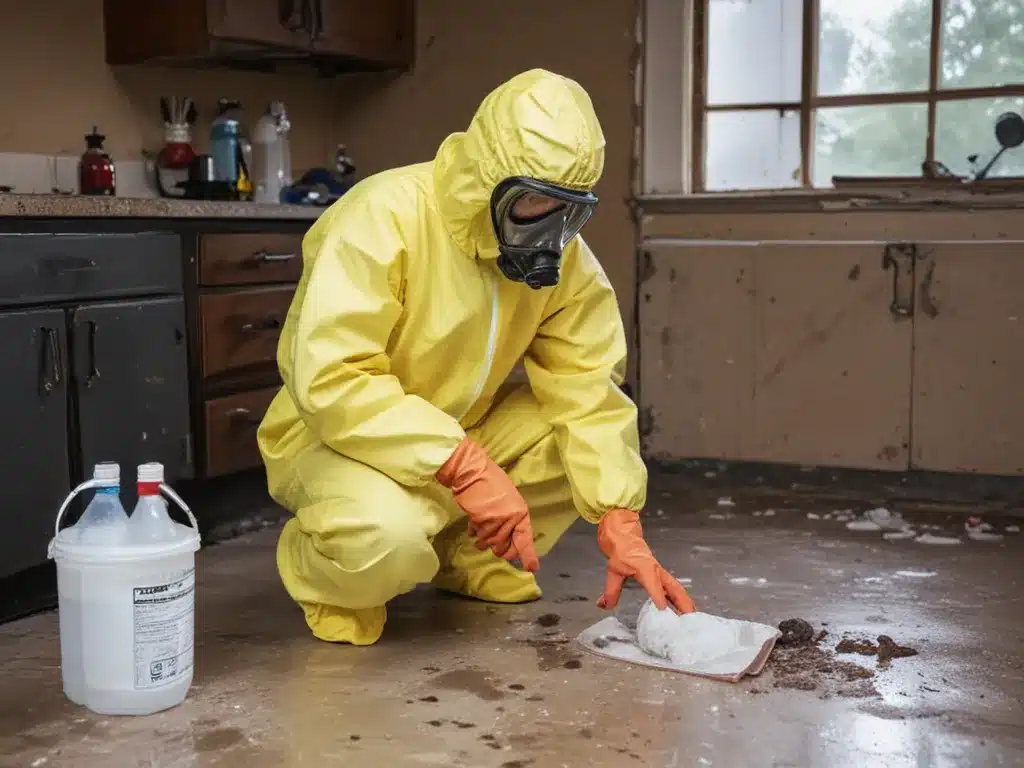Introduction
Cleaning up a former methamphetamine lab is extremely dangerous due to the hazardous chemicals and residues that remain. I will outline the safety precautions, cleanup process, disposing of waste, and decontamination needed when removing meth lab chemicals and restoring a property.
Safety Hazards and Precautions
Chemical exposure is the biggest risk when cleaning a meth lab. Meth production involves many caustic, flammable, and toxic chemicals. Exposure can cause severe health effects like chemical burns, respiratory distress, and poisoning. Proper protective equipment is critical.
I should wear a full body Tyvek suit with hood, rubber boots, nitrile gloves, goggles, and an OSHA-approved respirator when cleaning. The respirator cartridges should be organic vapor/acid gas/P100 combination.
Explosions and fires are also hazards as meth labs often contain residue of ignitable, reactive chemicals. Having proper fire extinguishers on hand is important. Areas should be well-ventilated to prevent chemical vapor buildup.
Professional meth lab cleanup crews are highly trained. An untrained person risks serious injury or death if attempting DIY meth lab cleanup. Hiring a professional crew is strongly advised.
Initial Entry and Securing Site
I should not enter the meth lab site until a thorough initial assessment is complete. Signs of meth production may include:
- Strong chemical odors
- Lab equipment like glassware, tubing, burners
- Suspicious materials like iodine-stained surfaces, red phosphorus
- Discarded chemical containers
Before entering, I need to open windows and use fans to ventilate for 30-60 minutes minimum. All ignition sources must be eliminated.
I should carefully look for hazards like spilled chemicals, exposed wires, and booby traps which are sometimes left behind. Photographing everything provides documentation. Securing the site and restricting access prevents exposure to others.
Removing Chemicals and Waste
A licensed hazardous waste disposal team should handle the chemical removal process. All waste needs proper transportation and disposal at an authorized facility.
Some chemicals that may require removal include:
- Toxic solvents like acetone, methanol, toluene
- Corrosives like sulfuric acid, sodium hydroxide
- Ignitable materials like Coleman fuel, ether, lighter fluid
- Reactive compounds like lithium, sodium metal
I should not handle or transport meth lab chemicals myself unless I have extensive training. The team uses protective suits, respirators, and chemical storage drums. Materials are tested and categorized before off-site disposal.
Decontamination and Cleaning
The cleanup crew uses a decontamination solution to wash down all surfaces. Walls, floors, countertops, bathrooms, and ventilation systems must be scrubbed.
All porous materials like carpets, drapes, and upholstered furniture should be discarded, as they absorb chemicals. Non-porous surfaces can be washed repeatedly.
Ventilation systems require special cleaning. Air ducts may need to be removed if chemical residue is present inside. HEPA vacuuming removes particulates from ducts.
Cleaning crews test areas with pH strips and chemical detectors to ensure hazards are fully removed before the property can be restored.
Restoring the Property
Once the site is fully decontaminated and tests are clear, rebuilding efforts can begin. Construction crews repair any structural damage and install new carpets and finishes.
In some cases, very contaminated structures are simply demolished and rebuilt. Severe chemical contamination can penetrate wood, masonry, and foundations.
The local health department performs final tests and issues a certificate stating the property is safe for occupancy after meth lab cleanup. This documentation provides assurance when reselling.
Conclusion
Cleaning meth labs requires extensive hazardous materials training and strict safety protocols. Attempting DIY cleanup risks deadly exposure to toxic chemicals and residues. Hiring professional meth lab cleanup crews with proper training and disposal permits provides safe, effective removal of all hazards. With their expertise,properties can be fully decontaminated and restored for reuse.







